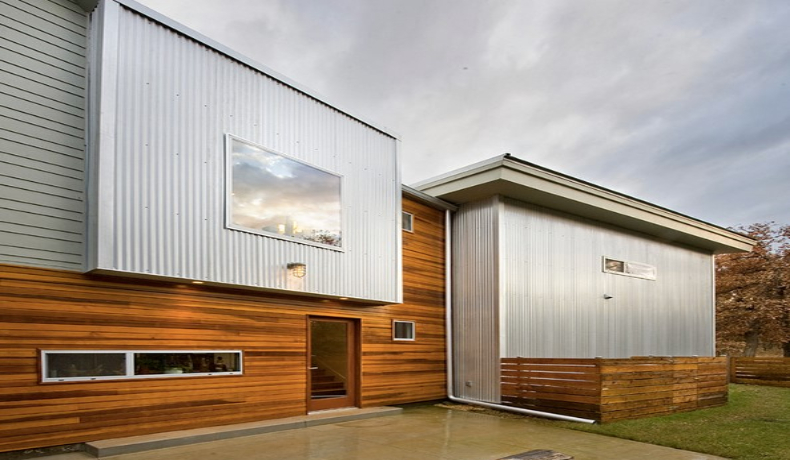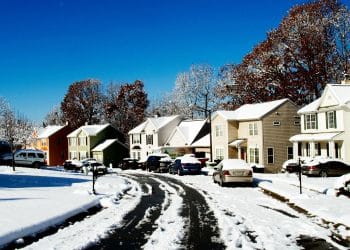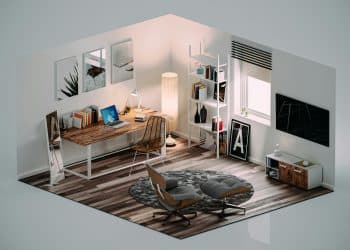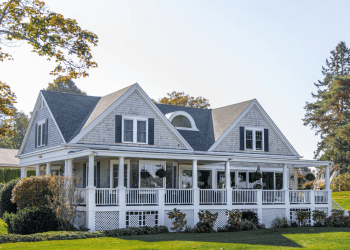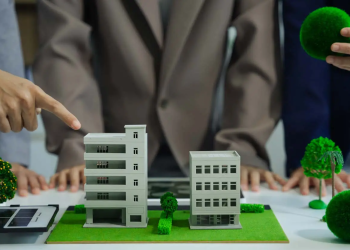Exterior cladding has become popular in modern home construction due to its resiliency, concreteness, and aesthetic features. It provides double protection to your exterior and interior parts of the house. It also helps the structure to hold up for a long period. It serves as a barrier to guard the home and withstand the effects of the extreme and changing weather conditions.
The cladding materials vary depending on the homeowner’s preferences and financial means. They can choose among the fundamental construction materials, such as wood, vinyl, metal, fiber cement, metal, natural stones, or brick and mortar. In this article, we will tackle the various exterior wall cladding types that can help preserve your home at its fullest.
1. Hardwood & Softwood Timbers
When you hear the word hardwood, you might think that it is a thick, dense, and sturdy material. This perception might be right, but there is a deeper reason why it is called hardwood.
Generally, the timber is the best wooden material when it comes to home structures. It makes the foundation concrete, durable, and solid. This wood has two types, namely hardwood, and softwood. If you prefer this material, you can always find Timber delivered Sydney supplies around New South Wales location. You may also try to canvass from other cities if you are living outside the NSW.
You can understand these terminologies easily by merely looking at the timber’s trunk anatomy. To differentiate the two, softwood is usually light golden brown, and this material has a lightweight density. It is also resistant to bacteria, moisture, fungi, and termites. Generally, its price is cheaper than the hardwood. These wooden materials derived from evergreen conifers, also known as the gymnosperm trees. Some of the examples are spruce and pines.
On the other hand, the hardwood has a dark shade and it consists of a complex structure. Usually, these wooden materials come from flower-bearing plants, also known as an angiosperm. Some of the examples include walnut, maple, or oak trees.
Hardwood and softwood timbers provide a refreshing environment and bring a natural look for your home. However, you need to have regular maintenance every year to prolong the life of the exterior clad.
2. Fibre Cement
Most people prefer heat resistant homes since these structures are economical. You do not need to always turn on the AC to make the room temperature cool and cozy. Moreover, they are less prone to fire casualties.
With this regard, the construction and engineering companies use Fibre cement for exterior cladding. It contains composite material and cellulose fibers that contain resistance to termites and fire. Furthermore, it will make your home look sophisticated and hotel-inspired style in its appearance.
3. Vinyl
If you prefer a simple and modern look for your home, you can also consider the Vinyl exterior cladding. Usually, the companies manufacture this material using a polyvinyl chloride resin to make it resistant to fire and electricity. It also produces energy-efficient benefits, proper insulation, and cost savings in the long run. Furthermore, this type of material is versatile because you can have several color and style options to choose from.
However, these materials should undergo strict compliance with the National Code of Practice for the Safe Use of Vinyl Chloride. If you are not sure whether the store sells legit supplies, you can always check the government website or talk to the store’s customer service.
4. Metal
Metal is also a great exterior cladding material to protect your home from the ranging extreme weather conditions. In most cases, the metal type materials that are popular in the house constructions include copper, steel, zinc, and aluminum. They feature water-proof barriers, fire-resistant properties, and energy-efficient. They are also easy to maintain and clean. You do not need to worry about the corrosion because they use special metal-type materials for the exterior cladding.
You can combine the wood and metal materials to come up with a contemporary design. It makes the home look neutral, natural, neat, and sleek in its finish. Generally, the modern type of houses uses both wooden and metal-related materials.
5. Brick and Mortar
You might wonder how brick and mortar play a vital role in modern housing designs. Generally, the classic and European-inspired traditional houses and commercial buildings make use of these materials. It provides long-lasting protection for your home and a great barrier against heat, rain, snow, and other weather conditions.
However, these materials are expensive due to their compact and solid foundation. Nevertheless, they are effective for long run use, and they are worth an investment. They are also easy to maintain, and they do not require tough cleaning. They are also great barriers to outdoor noise since they feature sound-proof benefits.
Have you chosen the best exterior cladding for your home?
Your home needs to be built with a solid foundation to have protection against the calamities. It is a worthy investment to buy exterior cladding materials because it can provide benefits in the long run. However, you need to choose the best material that could fit your lifestyle. You should consider asking yourself whether: a) Are you looking for a thermal, fire, and water-resistant material? b) Do you prefer affordable exterior cladding construction supplies? and c) Do you consider a material that adds value and aesthetic to your home?
If you can answer these queries, you can assess what kind of material you are looking for. Moreover, you must make sure to check your budget, whether you can shoulder the costs.

